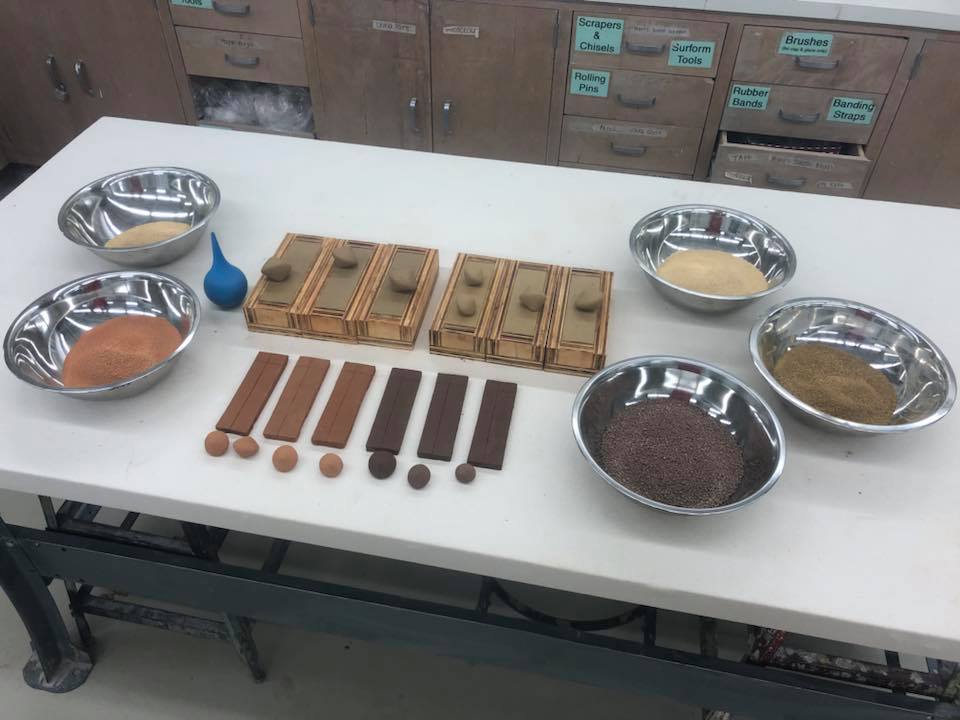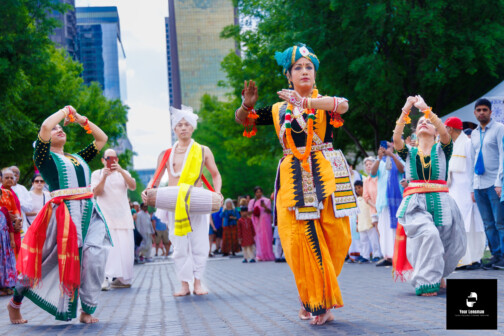What does care work— the kind of labor done by teachers, nurses, flight attendants, social workers and parents— look like as art? We can more easily point to what it is not: studio practice, MFAs, medium-sized objects.
The primary process of care work is unseen, an exercise of emotional control. It demands a sustained process of intimacy and attention. Care work is marked by generosity and a dedication to transforming the person cared for, like what a teacher does.
Amara Abdal Figueroa, a graduate of RISD’s architecture program, is building a body of work situated in post-Hurricane Maria Puerto Rico. Figueroa uses clay to create domestic objects like ceramic bowls that can be used as overnight water filtration systems. Her practice explicitly foregrounds a regenerative use of material as opposed to an extractive one. She uses, or cares for, what is already there. “The ground is my medium,” she says.
Figueroa’s exhibition Raw Material | Materia Prima is on view at Ana G. Méndez University Systems’ art gallery until November, open weekdays from 11 a.m. to 8 p.m. This show, curated by SMU Pollock Gallery Director Sofía Bastidas, exemplifies the potential for artists to make care objects, which are treated more like people than art. Figueroa’s work stems into two parallel practices: on one had, she is experimenting with clay bodies for water filtration in order to popularize the production of clay filters, as standardized by Potters for Peace. On the other, she proposes a democratized food waste management system in order to speed up top-soil generating via food waste fermentation particularly in the urban setting. By providing an alternative to fly-infested trash in a tropical kitchen, anaerobic composting also keep rodents away and therefore hopes to reduce bacteria-borne infectious diseases like leptospirosis: think of it like a probiotic for the ground. These acts of bioremediation are documented in 35mm photographs, all in a strict red, green, blue color scheme framing, corresponding to the red, green and blue color-sensitive cones in the retina. An effect of interconnectedness made through simple montage and the formal symmetry of different materials in the photos work on multiple levels.
* i was learning about this just around when the hurricane hit at the Loisaida Community Gardens in the Lower East side and was eager to continue doing this in PR: http://moscollective.net/WP/
At her home in Ponce, she is testing Bokashi recipes of coffee chaff and effective microorganisms to make this method something she can actually propose for either a curriculum integrated into a class, or as a micro business for a community in need of organic waste management.
Much like industrial labor took form as art in the 1960s, emotional labor is doing so now. Deeply embodied narratives, poetry, and multidimensional (re: non-literal, indirect, effective) layering of meaning in object, space, context, and exhibition are key. As a Kuwaiti-Puerto Rican artist, Figueroa makes work about colonialism, intergenerational cycles of experience, regenerative rituals and a daily relationship to the land. She places herself in the gray area of postcolonial experience situated between the unseen future and the violently eradicated past. She tries to involve ancestral knowledges and material practices from both of her heritages into what the artist calls a “contemporary indigenity” or a “contemporary local.”
Ancestrality can open onto hotly disputed terrain within postcolonial discourse. Yet Figueroa’s perspective seems firmly grounded in feasibility and accessibility.
“There is a wide range of different ceramic practices all over the island,” she says. “Some use imported commercial clays, others locally sourced. What I like about Potters for Peace, [an organization whose model Figueroa draws from] is that the caliber of their work is down to the T; their understanding of clay particles and the development of their recipes with a combustible allows them to deduce optimal firings and suggest a method of working with specific clays. With the introduction of this practical solution, which is water filtration through a ceramic vessel, one is also simultaneously creating the infrastructure for multiple art and production practices that work with these materials to enter a discourse while reconnecting us to the volcanic ground. That is the work that I aspire to do.”
One thing the exhibition is not: trauma porn. It is meant to make visible a life that is obscured in the slow violence of colonialism. The curation is meant to make you step outside of Dallas’ very, very white art spaces.
Perhaps as visitors drive south on 35E past the Design District galleries and studios to the Ana G. Méndez University System, they can reflect on Texas’ relationship to colonialism. How, while a whole island is starved of resources, 40 percent of the oil industry in West Texas and 70 percent off the gulf coast are subsidized by the federal government to the sum of billions of dollars.
It is important to reflect as well on the interpersonal ways colonialism and racism affect our experience. Are you afraid to have difficult conversations with friends or at work about these subjects? That silence fuels colonialism. Are you afraid to speak to your friends when they participate in wildly racist art exhibitions? That silence is a main export of white supremacy. These examples aren’t hypothetical. That an exhibition in 2018 can call itself Postcolonial as a publicity stunt to sell property in Highland Park just shows how urgent it is for Dallas to hold space for exhibitions like Raw Material.
Figueroa has done the anonymous emotional labor of displacing her own comfort and becoming a nomad to find her place and understand her own work. The photographs in the exhibition bear a lightness and clarity and composure from all of the care and thought that went into them. Likewise, her clay bodies back in Puerto Rico are functional, beautiful forms of micro-infrastructure in the mode of domestic objects, multivalent and layered. Figueroa speculates on what autochthonous infrastructure might be. The exhibition documents a way of making art that is a vessel for care.





